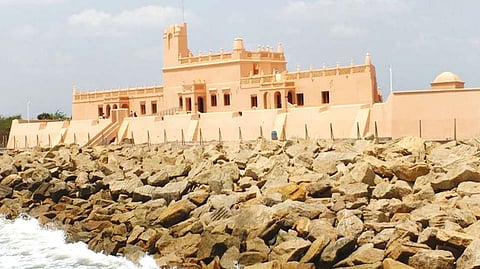

TIRUCHY: Along the stretch of Coromandel Coast, there exists a tiny hamlet Tharangambadi, a place well known for its rich heritage and legacy imparting knowledge on various visitors and their cultures. The hamlet, ruled by Nayaks, Danish, and British, also witnessed several name changes like Trankebar, Tranquebar, etc before acquiring the present name, Tharangambadi.
According to the historians here, fascinated with the India’s rich legacy and eyeing an establishment centre here, Danes were first to touch the shores of ‘Tharangambadi’, often dubbed as ‘land of singing waves’. As per records, on May 5, 1620 AD then King Vijaya Raghunatha Nayak of Thanjavur province granted permission to King Christian IV, his counterpart of Denmark, to establish a trade centre at Tharangambadi by fixing a rent of Rs 3,111. Later, through a Danish Navy captain Roland Crappe, King of Denmark purchased Tharangambadi and surrounding areas, paving the way for the Danes to begin establishing the stone fort ‘Dansborg’ in the coastal village. And in 1777 AD, Tharangambadi came under the complete control of Danes. After 68 years of Danish regime, Tharangambadi, for yet another time, was sold to the British with a capital amount of Rs 12.5 lakh. The majestic fort is now a centre of attraction for tourists, thanks to its rich legacy.
The gigantic two-storey Dansborg fort stands testimony to the rich cultural heritage of Tharangambadi, with the first floor of the fort accommodating spaces for large canons to spearhead the attacks. A few large rooms are also present, believed to be constructed for administrative purposes. The ground floor of the fort hosts spaces for prisons and animal stables, besides a tunnel way for the royals to flee in case of an enemy siege. However, the tunnel, fearing toxic gas and insects, prohibited is a no-entry zone for tourists.
Are you in Chennai? Then click here to get our newspaper at your doorstep!
Visit news.dtnext.in to explore our interactive epaper!
Download the DT Next app for more exciting features!
Click here for iOS
Click here for Android